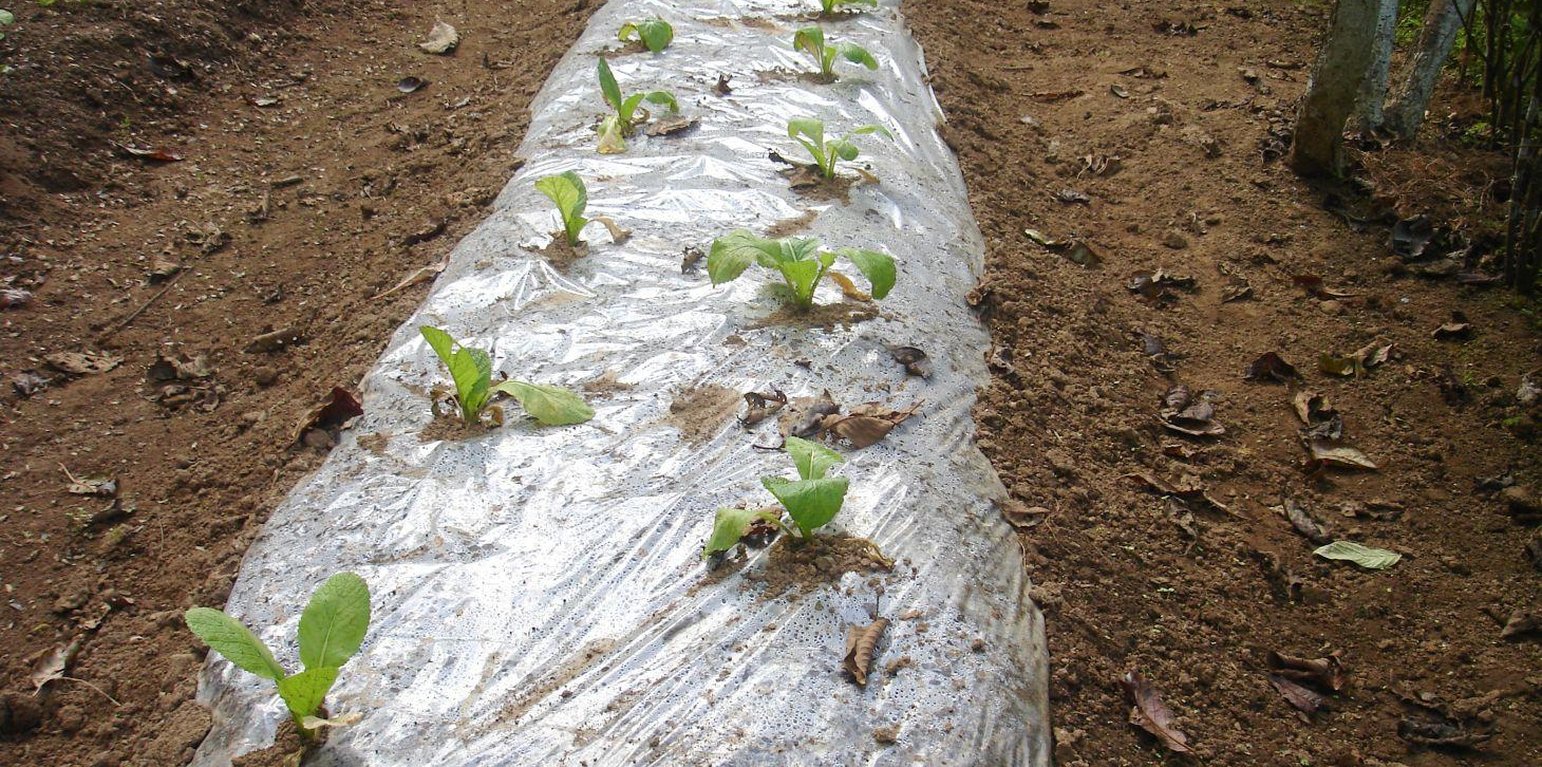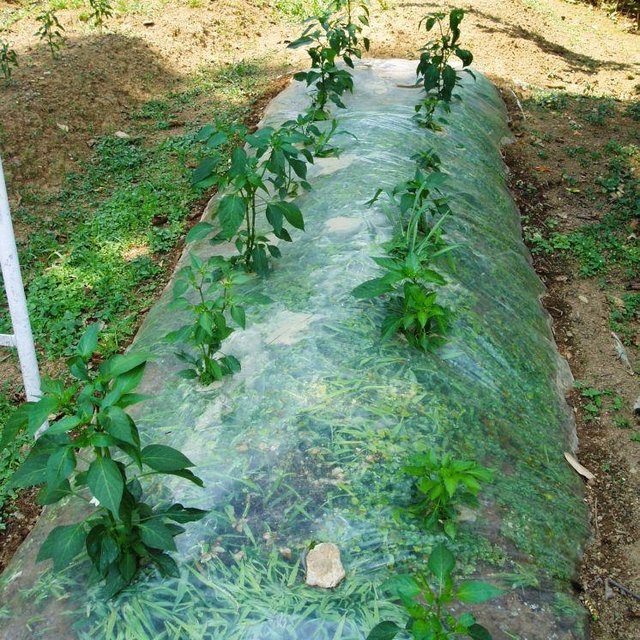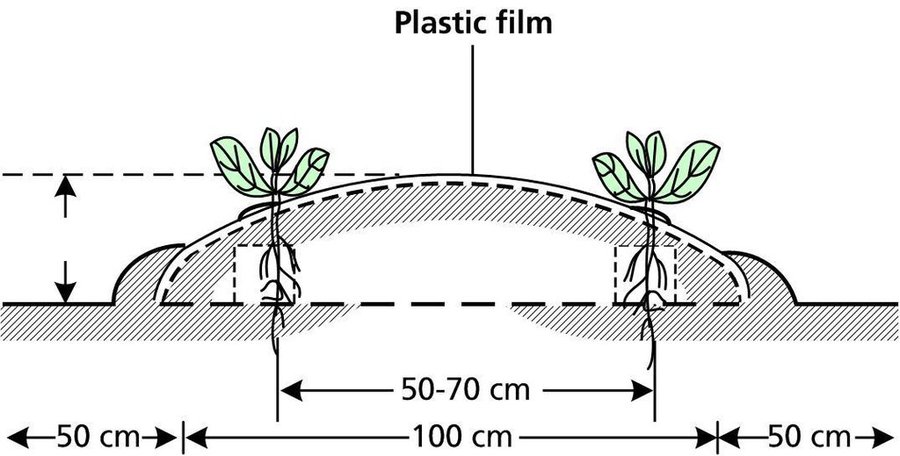



Agricultural production by traditional methods is constrained by extremes in temperature and by extremes in the availability of water; freezing temperatures as well as droughts and waterlogging have long daunted farmers. When plastic film is used on the soil, the solar energy absorbed by the soil during the day is retained at night since the plastic film prevents water from evaporating. Higher night time temperatures and higher levels of moisture in the ground promote active micro-organisms, which diminish the need for fertilizer and improve the physical properties of the soil.
Purpose of the Technology: Plastic film can be used in one of two ways. In the first method, the plastic film is spread on ridges of soil, the plastic is perforated at regular intervals, and the seedlings are planted through these openings. In the other method, seeds are planted on the ridges as in the traditional method, and when the seedlings have grown to a reasonable size, the ridge is covered by a plastic film and holes are cut at the position of the seedlings to allow them to pass through the film. Depending on the condition of the film after the crops are harvested, the covered ridges can be used to grow another crop.
Establishment / maintenance activities and inputs: Experiments at ICIMOD show that the use of plastic film can, on average, double the crop yield as compared to traditional methods. Previous studies by Lu Rongsen (1994) showed that the plastic film method can increase chilli production by 74%, tomato production by 52%, and the production of garden peas by 31%.
地点: Lalitpur District, 尼泊尔
分析的技术场所数量:
技术传播: 均匀地分布在一个区域
在永久保护区?:
实施日期:
介绍类型





| 对投入进行具体说明 | 单位 | 数量 | 单位成本 (美元) | 每项投入的总成本 (美元) | 土地使用者承担的成本% |
| 劳动力 | |||||
| Preparing land plot | persons/day/ha | 80.0 | 3.875 | 310.0 | |
| 设备 | |||||
| Spade, secateurs | ha | 1.0 | 10.0 | 10.0 | |
| Plastic film | kg/ha | 48.0 | 1.0 | 48.0 | |
| 植物材料 | |||||
| Seedlings | ha | 1.0 | 250.0 | 250.0 | |
| 技术建立所需总成本 | 618.0 | ||||
| 技术建立总成本,美元 | 618.0 | ||||
| 对投入进行具体说明 | 单位 | 数量 | 单位成本 (美元) | 每项投入的总成本 (美元) | 土地使用者承担的成本% |
| 劳动力 | |||||
| Support the crops | persons/day/ha | 30.0 | 3.6668 | 110.0 | |
| 设备 | |||||
| Bamboo poles | ha | 1.0 | 20.0 | 20.0 | |
| 技术维护所需总成本 | 130.0 | ||||
| 技术维护总成本,美元 | 130.0 | ||||
in areas with a long winter season
less time is spent weeding
improved crops and higher yields benefit the entire community because more food is available and the harvest brings in cash income.
Downstream farmers benefit because soil is conserved and runoff is reduced